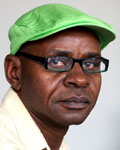The Media Monitoring Project (MMP) has called on the South African media to refrain from presenting a biased, prejudicial and unfair reporting around the issue of legal abortion as set out in the Choice on Termination of Pregnancy (TOP) Act of 1996.
“Our recent monitoring suggests that press coverage may stigmatise abortion by associating it with irresponsible sexual behaviour and provides little information on the procedure on how to access it,” MMP executive director William Bird said last week on the eve of World Population Day.
Save lives
“SA media could contribute further to saving women's lives by providing information on family planning, and issues relating to termination of pregnancy,” Bird added.
“Women, after all, have a constitutional right to make decisions concerning reproduction, so they need sufficient information in order to exercise this right,” he concluded.
The promulgation of the TOP Act in 1996 officially put an end to an overwhelming number of backstreet abortions that killed thousands of desperate women and gave many others a platform to make their own choices.
But 12 years down the line, the legislation continues to be severely hammered by pro-life groups, mostly religious and conservative forums, for what they see as a ‘travesty of human life'.
Joined the chorus
The media, which many see as an independent force that could promote what feminists and women's rights activists call an ‘important step in the right direction' to family planning, have also joined the chorus of those ‘crucifying' the legislation, to the dismay of the MMP.
“TOP saves lives,” the South African Medical Journal says, adding that maternal deaths in SA have decreased by 90% since the introduction of the Act. It adds: “Family planning, including TOP, enables women to take control of their bodies and future, and with that increases their opportunity to participate in the labour market.”
But the MMP claims that the media's reporting of the abortion issue tends to be biased in favour of pro-life organisations - something many observers believe might prejudice and victimise women, who may think twice before making the ‘executive' decision.
“It seems that our youngsters do not have anything else to do but be sexually active. The clinic has released statistics that prove that after every holiday there is an influx of teenagers wanting abortions,” one newspaper monitored by the MMP claimed.
“82 000 babies (...). That is the death toll at the nation's abortion clinics!” And every year the number of abortion goes up. Right now it is peak time... as teenage girls come for abortion after the festive season. There might be another peak time for abortion among young girls after the July school holidays,” another newspaper reported in January this year.
Contribute to stigmatisation
“Stories like these may contribute to stigmatising termination of pregnancy as immoral or as means for dealing with irresponsible teenage behaviour,” Bird said.
“As a result of this stigma, women may be reluctant to access legal termination of pregnancies, contributing to high numbers of unsafe and illegal backstreet abortions.”
The MMP regrets that, with coverage favouring stories detailing the excesses of TOP and so little on the procedure itself, women lack information on abortion.
The media watchdog organisation, which says that its abortion media research dating back from 1997 shows a significant bias, calls on the media to cover abortion stories in a balanced, accurate and fair manner and avoid biased positions.
Friday, 11 July 2008, was World Population Day and this year's main theme was family planning. The United Nations Population Fund (UNFPA) states that worldwide access to family planning could save the lives of approximately 175 000 women each year.












































